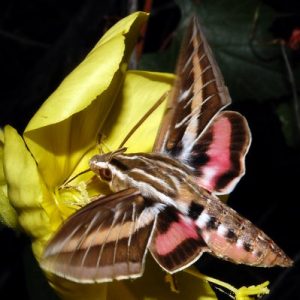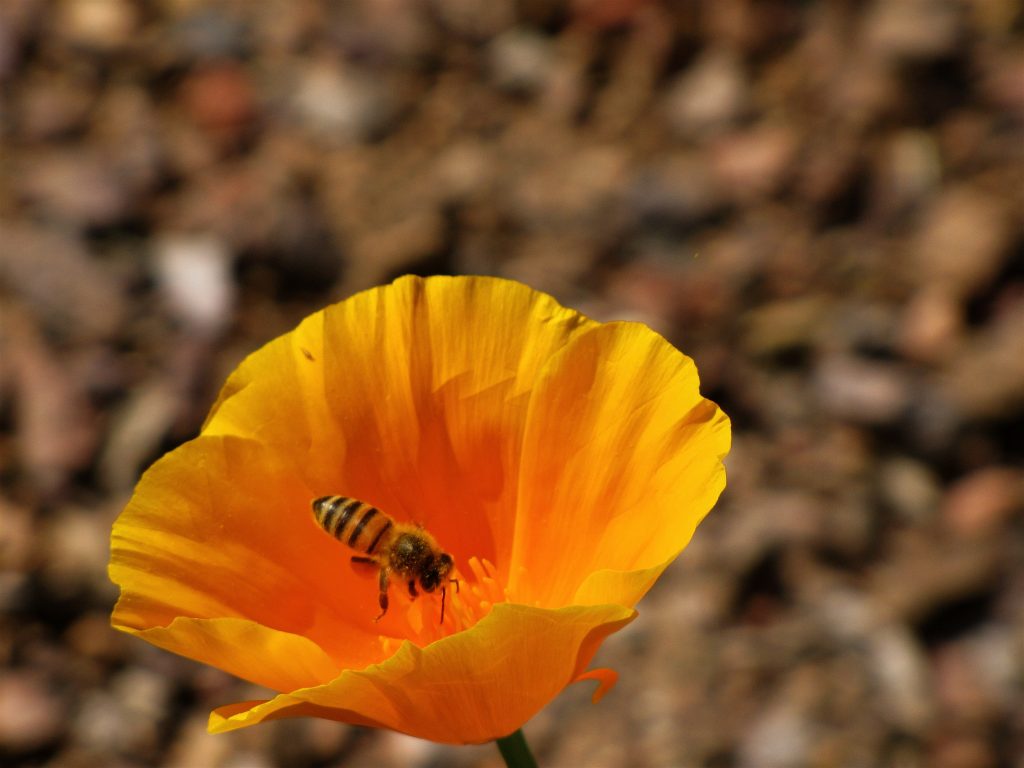April is Water Awareness Month, a time to raise awareness about the importance of water conservation and how to use water more efficiently. But another exciting event to celebrate in April is Earth Day, a special day set aside each year on April 22nd to help focus our attention on the importance of protecting our environment.
One easy way you can do your part is by selecting pollinator-friendly plants for your landscape. But first, let’s define what a pollinator is and why they are important.
A pollinator causes plants to make seeds (fruits and vegetables) by moving pollen from the male anthers of a flower to the female stigma of a flower to accomplish fertilization. You might be surprised to find out that it’s not just bees that are doing all the work. Butterflies, moths, birds, beetles, flies, ants and even bats are important in the pollination process. For example, did you know that Saguaro flowers are pollinated by bats at night and by bees and birds such as the white-winged dove during the day?

Flowers, fruits, vegetables, even coffee and chocolate are thanks to the wonderful work of pollinators – an estimated one out of every three bites of food. But, in addition to the food we eat, pollinators support healthy ecosystems. They help to clean the air, stabilize soils, protect from severe weather and support other wildlife. Unfortunately, we are learning that worldwide there is disturbing evidence that pollinators are in decline due to the use of pesticides and invasive plant species, and the ever-expanding conversion of natural landscapes for human use.
A first step to help improve the future of pollinators is to include plants that attract pollinators in our home or urban gardens and landscapes. The best part is that native plants that thrive in our desert climate (and often need less water) are the best source of food for pollinators. By providing good habitat, a range of native flowering plants and avoiding the use of pesticides, you can help provide a refuge for pollinators right in your own backyard – heck, your front yard, too!
Visit the following links to learn more:
- Pollinator-Friendly Low Water Plant Photos Pinterest Board
- Landscape Plants for the Arizona Desert
- The Pollinator Partnership
- USDA Forest Service Site on Pollinators
- Southwest Monarch Study
Jody Latimer is an environmental resources supervisor with the City of Peoria, AZ, one of fifteen Water – Use It Wisely partners to offer water-saving advice and programs.


